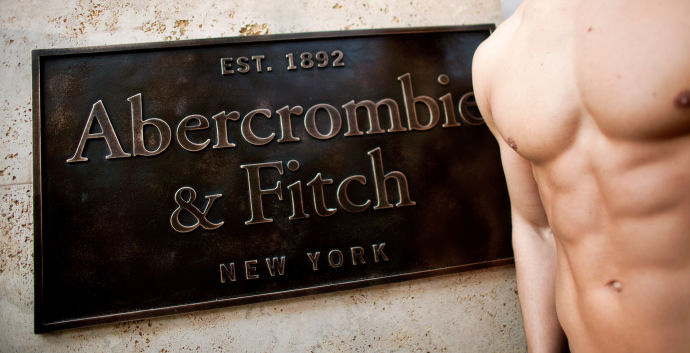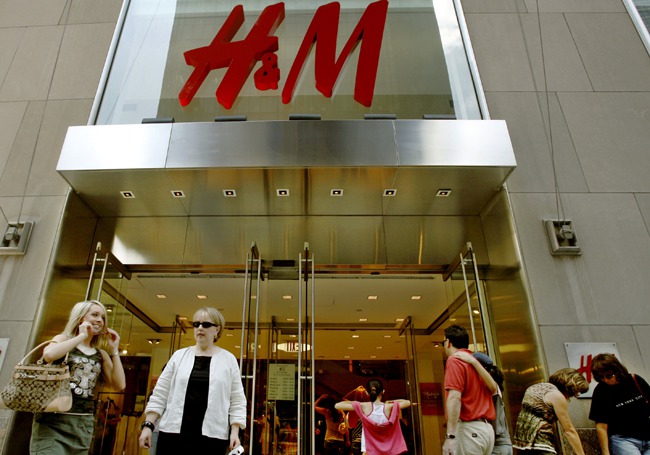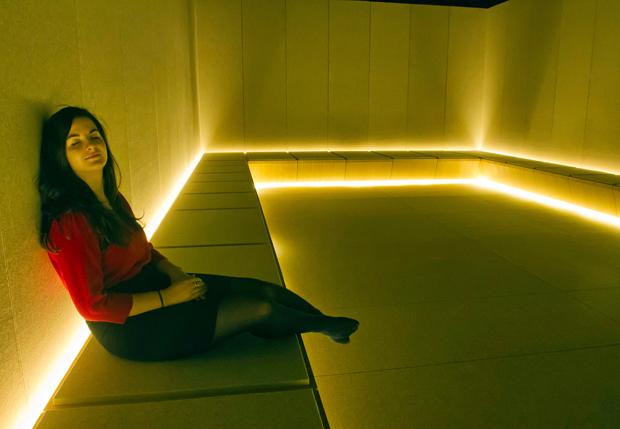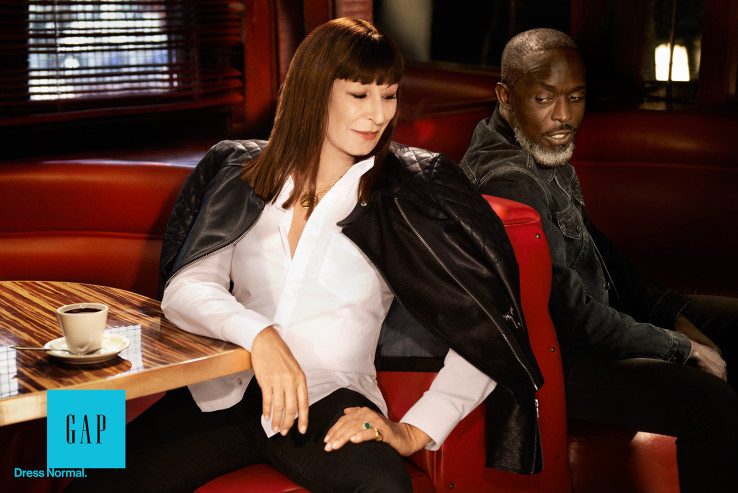Once upon a time, you could wear your status on your sleeve, your taste on a tag. Whatever brand spoke to you — Abercrombie & Fitch, Gap or Louis Vuitton — could be proudly displayed on a T-shirt, a bag or a pair of jeans.
Plus: Legendary Century 21 expands | | Welcome to the urban burbs
Now comes a new trend: no labels. And retailers are trying to regroup because buyers, perhaps influenced by social media, are relying more on personal taste rather than conformity to make their purchasing decisions. Also, after the Great Recession and the resulting income disparity across the country, customers want to downplay, not accentuate, their wealth.
Retailers are scratching their heads: What now?
Conspicuous branding is over
Abercrombie & Fitch and its sister brand, Hollister, have been steadily losing market share. Sales were down last year by approximately 10 percent compared to 2013. The brands, popular in the ’90s and early 2000s, were built on marketing a “technicolor teen lifestyle” of conformity.
Also: Target misses the mark | World’s largest shopping malls
But the era of conspicuous branding is over, and teenagers don’t feel the need to sport the A&F brand to fit in with the popular crowd. Teenagers and Millennials, A&F’s target demographic, are no longer interested in the “aesthetic of conformity.”
(NewYorker.com)
Analysts say the brands are struggling to “adapt to the changing, non-logo times.”
Teens have been spending less at A&F, Aeropostale and American Eagle, known as the three As. Instead, they’re shopping at H&M, Zara and Forever 21 – fast-fashion retailers that move designs quickly from the catwalk to the shelf.
While A&F was pitching conformity and exploiting the pressure to fit in and be cool — and charging a premium price for the privilege of belonging — H&M and other fast fashion retailers were delivering a constant supply of fresh fashion at low prices.
(Forbes.com)
Instead of producing seasonal lines, fast-fashion retailers roll out new items each week. They can bring trends from the catwalk to the sales floor in no time, capitalizing on trends and giving shoppers what they want in record time. Fast fashion costs less and keeps shoppers returning to see what’s new.
Fast fashion is changing the rules, and sales are booming at shops like H&M, Zara and Forever 21.
At stake is the $600 billion Millennials spend a year in the United States, a sum that’s projected to grow to an estimated $1.4 trillion in 2020, when the oldest of the cohort will be approaching their mid-40s.
My own personal style
Millennials are moving away from big brand logos like A&F and following a new trend. Today, Millennials are creating their own personal style. A recent study showed that 55 percent of people between 13 and 34 years old say, “I don’t follow trends; I like to think I have my own personal style.”
“Clothes aren’t as important to me,” said a teenager from New York to the New York Times as she shopped at Hollister with her sister and a friend. “Half the time I don’t really buy any brands. I just bought a pair of fake Doc Martens because I don’t really care.”
Young shoppers are so adept at building Facebook, Instagram and Pinterest pages, mixing and matching different elements of their persona, that it just makes sense that they would carry this approach over to their clothing choices.
“People are looking to create a unique identity,” said Allen Adamson, an author and branding expert at Landor Associates. “They want to put together their own story rather than have someone else tell them.”
But it’s more than style
This generation came of age and began entering the workforce just as the Great Recession hit in 2008. Many are underemployed and still paying off student loans. The typical 18- to 34-year-old makes $2,000 less each year than young workers did in 1980, according to the Census Bureau.
Across the world, 60 percent of Millennials feel personally influenced by the economic crisis. Because of this, Millennials not only want to create their own style, but they also want to save money while doing so.
Millennials are doing more of their shopping at thrift stores to find cheap and unique clothes. They’re carefully curating their own unique look and then sharing images of their outfit of the day (#OOTD) on social media.
The shift is happening across the spectrum
Logos are disappearing at the other end of the shopping spectrum, too. High-end retailers like Gucci and Louis Vuitton are feeling their share of the pain as wealthy shoppers are moving away from logo-heavy clothes and accessories.
“It looks a little trashy,” said one shopper. “It’s better to be subtle.”
Louis Vuitton has plans to reduce the visibility of its monogrammed luxury items, but that’s going to be challenging, considering that two-thirds of the retailer’s products carry the logo.
Wealthy westerners are sensitive to the debate about income inequality, and everyone felt the effects of the recent Great Recession. Discerning shoppers in China, who until recently have been clamoring for logo-centric, high-end fashion and accessories, want to avoid attention in the current anti-corruption drive.
But beyond these practical concerns, the shift to personal taste and individuality is happening across of the spectrum.
“This is really what keeps me up at night,” said Johann Rupert, the chief executive of Richemont, which owns Cartier. “Because people with money will not wish to show it.”
“Today, it’s really about understated luxury,” said June Haynes, a luxury retail consultant and a former executive at Valentino.
Selfridges & Co. recently launched a “No Noise” campaign, which includes the Quiet Shop, “a store-within-a-store for which some of the world’s most respected brands have actually removed their logos.” Shoppers are asked to remove their shoes and cell phones, and they are offered a variety of mindfulness exercises in-store. The Quiet Shop features a variety of “de-branded products,” including Levi’s, Crème de la Mer and Beats by Dre without the signature logos.
(Standard.Co.UK)
“Dress normal” misses the mark
Gap tried to get in front of the trend last year with a collection of ordinary clothes and a global advertising campaign’s with “dress normal” as the tagline and brand positioning.
(Lareclame.fr)
The celebrity-filled campaign urged shoppers to “be confident in who we are by dressing how we’re most comfortable.” Providing an antithesis of logo-centric, Gap presented shoppers with a minimalist, androgynous look and feel that, “while intended to be provocative and ironic, we believe the fall floor set may be, in a word, too ‘normal,'” according to one analyst.
The “dress normal” campaign missed the mark, and Gap’s sales were down by 4 percent.
The curated life
Millennials are less likely to identify with a political party or affiliate with a religious group. So, it only makes sense that they’re less likely to identify with a famous logo.
How will brands help shoppers to express their individuality? And, more importantly, can they? That remains to be seen. However, one thing is certain: Brands will have to maintain quality either way, because their name is still attached to the product regardless of whether it is outwardly visible or not.
Anjee continues to be an insatiable collector of all things retail. She’s a student of culture living next door to future shoppers, whose fleeting trends constantly change the retail landscape … driving retailers, landlords and developers crazy!

 Anjee Solanki
Anjee Solanki





 Colliers Insights Team
Colliers Insights Team